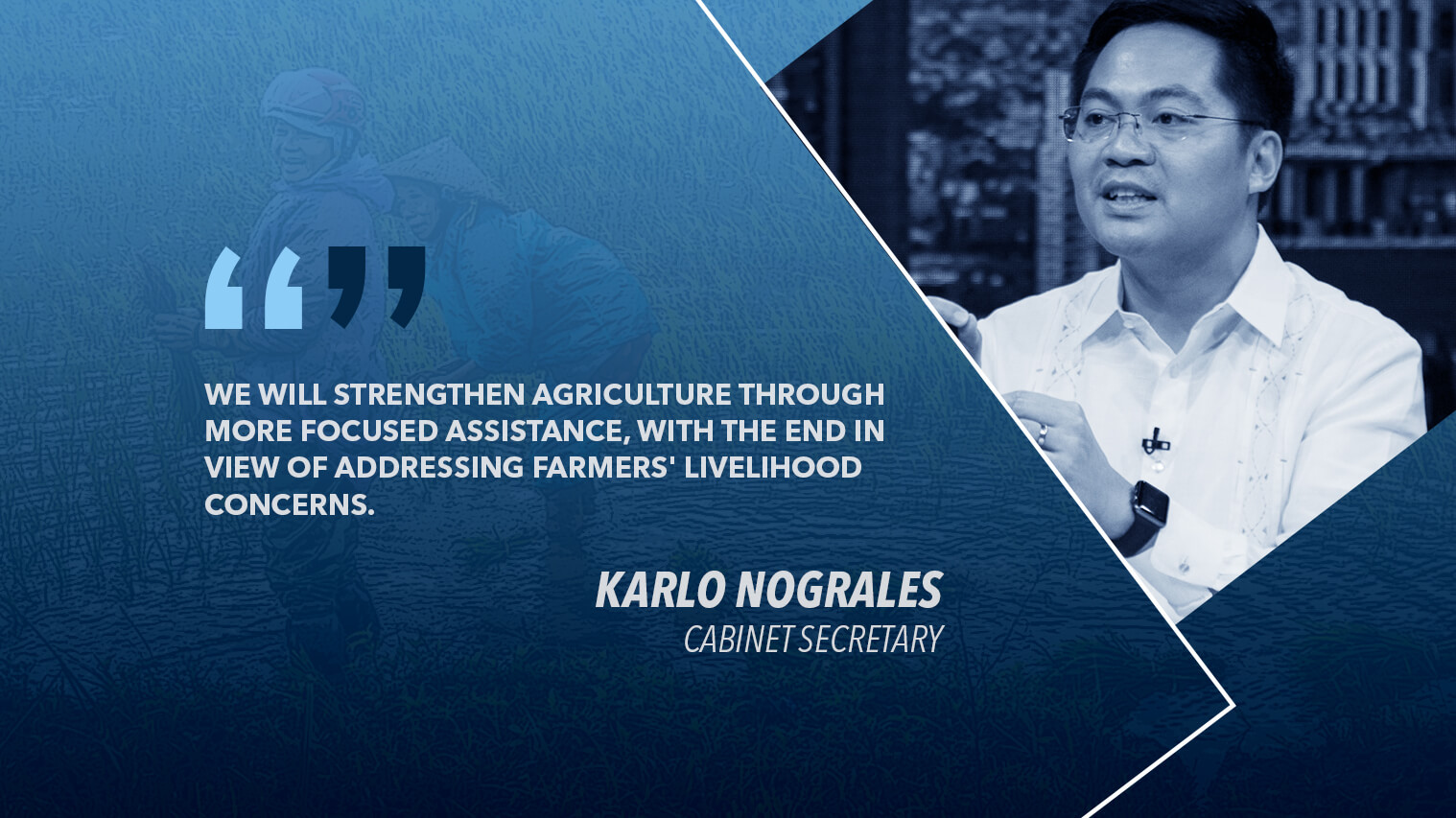“We will strengthen agriculture through more focused assistance, with the end in view of addressing farmers’ livelihood concerns, increasing their productivity, and ensuring supply stability and food security for our people.”
This was the statement of Cabinet Secretary Karlo Nograles, who on Friday said government will strengthen and follow through on initiatives aimed at further strengthening support to farmers and agrarian reform beneficiaries, as the administration renews its commitment to further develop the country’s agri sector.
“Foremost among our initiatives is examining the expansion of credit and loan facilities through the Land Bank of the Philippines (LBP). For example, last year President Duterte directed the LBP, in close coordination with DA and DAR, to reach out to farmers and provide them with financial assistance,” revealed Nograles.
“Foremost among our initiatives is examining the expansion of credit and loan facilities through the Land Bank of the Philippines (LBP).”
Nograles said this led the DAR to launch a new lending facility called the Accessible and Sustainable Lending Program for Small Farmers, or ASL Farmers Program, which sets a low 6 percent per annum interest rate.
“We’re assessing response to the program so that we can tweak and make improvements. The ASL Program has credit components to individual farmers, farmers cooperatives, and agri-based associations, so it’s really comprehensive,” added the former legislator from Davao.
“The ASL Program has credit components to individual farmers, farmers cooperatives, and agri-based associations, so it’s really comprehensive.”
Nograles further stressed that during congressional deliberations for the 2019 budget, LBP reported a high 62 percent amortization payment compliance by agrarian reform beneficiaries, which meant that financing schemes were empowering farmers.
“Ongoing efforts are underway in closely coordinating with the DA, and the agency is examining our production targets for the coming harvest seasons. Of course we’re already factoring in effects of weather disturbances, prices of farm inputs, and the like,” Nograles noted.
According to Nograles, government this year “will maximize all resources available to ensure that the agriculture sector is a driver of the country’s economic growth.”
“The government recognizes the importance of the sector and how vital a contributor it is to the Philippine economy. This is why the agencies involved are working hand in hand to ensure that government interventions have a positive impact on the agriculture sector and its stakeholders, especially our farmers and fisherfolk.”
In a joint statement on the country’s fourth quarter economic performance, the government’s economic team said that Philippine economic growth “remained stable as it grew 6.1 percent in the fourth quarter of 2018 from the revised 6.0 percent recorded in the third quarter. This steady performance—the seventh consecutive year that the Philippine economy sustained its growth of more than 6.0 percent—brings our 2018 full-year growth to 6.2 percent.”
“This is a firm finish that cements the Philippines’ standing as one of the fastest-growing economies in Asia. We are next to India, Vietnam, and China. From Q1 to Q3 of 2018, we overtook Indonesia and Thailand in terms of economic performance,” read the statement.
However, the economic team acknowledged that agriculture growth slowed to 0.8 percent from 4.0 percent last year, with palay production contracting by 1.0 percent.
The economic team explained that “the drop in production in palay, sugar cane, and cassava tempered the gains of the sector in the fourth quarter. This was also due to several typhoons that hit Luzon, a normal occurrence in our country.”


